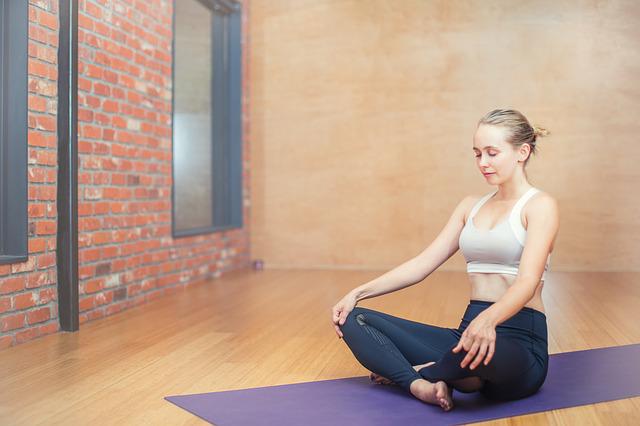Everyone finds it difficult to begin a new workout routine, especially if you are on the heavier side. But exercise is essential regardless of weight. Workouts can help you feel better about yourself, enhance your mood, and improve your health.
So, where do you begin? Use this advice to find an exercise that you’ll enjoy. Then, look for an exercise program that meets your needs at your local community center or fitness club.
The Advantages of Exercise
Workout routine is a good decision for everyone, but it can be especially beneficial for individuals who are on the heavier side.
Excess weight can increase your risk of various ailments such as high blood pressure, heart disease, diabetes, sleep apnea, and depression.
A moderate fitness regimen can help you minimize your risk of disease. Weight loss as a result of exercise can also help to lessen your risk of disease.
But, more importantly, exercise can help your body perform better throughout the day. If your body feels better as you go about your everyday activities, your mood and confidence are likely to improve as well. For these reasons, many people who exercise regularly come to enjoy it.
Before You Begin Working Out
Before beginning any workout routine, ensure that you are physically well enough to participate if you are on a heavier side. Consult your doctor about any limitations or modifications that may apply to you. Consult your doctor if you need to follow any additional procedures to monitor exercise intensity if you are taking medication (especially for high blood pressure).
Finally, make sure you have the right workout clothes and shoes. Visit a couple of shoe stores where a walking or shoe specialist will recommend many brands and allow you to try them on.
Workouts
The programs listed below are very well-suited for persons who are deemed overweight. Look into what interests you and then apply the suggestions to get started.
Walking
This may appear to be an easy decision, but there is a reason why walking is the best workout for practically everyone. Walking requires no special equipment and may be done practically anywhere. Walking is low impact, develops lower body strength and mobility, and can exercise easily, moderately, or intensely depending on your personal strategy.
However, keep in mind that walking is not for everyone. Consult a doctor if you are experiencing knee, back, or hip pain. You may be able to fix the issue or develop a better fitness program by working with a physical therapist or exercise specialist.
What to Do First
If you’re new to fitness, start by walking for 10 or 15 minutes every day. Gradually increase the time until you have one full 30-minute session.
Don’t stress about speed or tempo at first. Set constancy as your objective. See if you can gradually raise the speed and intensity of your workout as your fitness level improves.
Researchers discovered that moderate intensity could be attained by walking at a rate of 100 steps per minute. Or 3,000 steps in 30 minutes. You can buy an activity tracker, but an affordable pedometer (or your existing smartphone) will also count steps for you.
The top fitness trackers have been tried, tested, and reviewed. If you’re looking for an activity tracker, consider which option is ideal for you.
Aqua Jogging
Water workout routine is an excellent for seniors, folks who are recovering from injuries, and who are on a heavier side.
Water exercises are especially beneficial for persons who have aching joints or difficulties moving; nevertheless, lap swimming can be strenuous, and water aerobics programs are not always available. Aqua jogging is an excellent alternative.

Running in the water while wearing a buoyancy belt is known as aqua jogging. You receive all of the advantages of running or walking without the risk of injury. You might be able to get a buoyancy belt at your local pool, then head to the deep end of the pool and start running.
What to Do First
When aqua jogging, your feet should not come into contact with the pool’s bottom. This may seem counter-intuitive, but moving your legs against the water is the only way to progress forward in your lap lane.
It takes more effort than you might think, so begin cautiously and gradually increase the duration of your workout as you feel fitter. If you are uneasy in the deep end, start in shallow water and gradually work your way into deeper water as your comfort level grows.
Classes for Group Exercise
Creating a social support system is one of the most effective strategies for sticking to a fitness program. Group workout programs are a great opportunity to meet new people, but make sure you select one that matches your needs.
Before you invest any money, watch the class to get a feel for it. Examine whether the class’s pace appears appropriate for you and whether it is adaptable. Also, pay attention to how the instructor cues the choreography. A skilled teacher will provide ample early notice of any movement or direction adjustments.
What to Do First
On your first visit, introduce yourself to the instructor. Introduce yourself and explain that you are embarking on a new exercise regimen. By contacting them, you send the message that you welcome comments and encouragement. To ensure that you are comfortable during class, the instructor should provide further assistance and adaptations.
If you don’t feel ready for a group session, consider purchasing a DVD or using an internet streaming service to exercise at home. Programs like The Underbelly enable both beginners and experienced yogis to come as they are, allowing exercisers to take up space and providing adaptations as needed. Many of the streaming exercises have active internet communities.
Strengthening Exercises
There are numerous compelling reasons to begin a strength training program. Strength training can help you improve your range of motion in all of your joints. When you grow muscle, you increase your metabolic rate even when your body is at rest.
You can begin lifting weights at home, but joining a local gym or hiring a personal trainer may be extremely beneficial in this case. A single session with a personal trainer (at home, in a health club, or even online via video chat) may teach you easy exercises and technique cues that will help you maintain proper form.
While working with a personal trainer is a wonderful way to improve your strength, training confidence, and skills, it can be a costly resource. There are less expensive options. YouTube videos or community center classes, like YMCA, can also help you establish a foundation of strength training expertise.
What to Do First
When and if you join a gym, ask the staff to show you how to adjust the weight machines, cardio machines, and any other equipment you plan to use. Gyms occasionally provide complimentary personal training sessions to new members, which can help you understand the ins and outs of the machines at your specific gym.
Begin cautiously and avoid doing too much too quickly with any workout routine if you are on a heavier side. The most critical aspect of your new fitness routine is consistency. You don’t want to push yourself too much on your first day and then have to rest for a week.
Cardiovascular Exercise Machines
Some cardio devices might be an excellent addition to a new exercise plan. Riding a bicycle is an excellent way to burn calories while putting less strain on your joints. If you have back discomfort, joint difficulties, or simply need more support, a recumbent bike is an excellent alternative.
There are also recumbent cross trainers available, which provide more variety if you become tired of pedaling. The machine is similar to a stepper in that it allows you to work both the upper and lower body while putting less strain on your joints.
Consider a DeskCycle or a similar pair of portable pedals if you don’t have the space or the funds for a bike or a cross trainer. These compact, lightweight devices allow you to pedal while sitting at your work or in a comfy chair.
What to Do First
Begin cautiously and strive for consistency. Attempt to pedal for five minutes and then rest. Pedal for another five minutes, then rest. Increase the duration of your pedaling interval gradually while decreasing the rest interval. Remove yourself from the saddle as needed to stretch your joints and relax.
Mind-Body Training
Mind-body exercise is becoming more popular among the general public. Yoga, movement meditation, and Qigong sessions are all fantastic mind-body activities that are usually available to any exerciser.
Tai Chi incorporates several (typically standing) balance poses as well as a sequence of flowing motions to develop a joint range of motion. Tai Chi also includes meditational aspects, which aid in reducing stress and promote sleep.
What to Do First
You should evaluate the program before investing money, just like you would with any other group workout session. Inquire with the teacher if prior experience is required and what concessions can be made for a beginner exerciser.
Inquire about the locality as well. Some Tai Chi courses are held in parks or nature areas. This can provide the added benefit of allowing you to enjoy nature while exercising.
To Conclude
Keep in mind that the sort of exercise you choose is less significant than the fact that you perform it at all. Don’t be scared to try anything on this list in order to find an activity you like.
And commend yourself for adhering to your strategy! Keep a journal to document your progress, and consult with a doctor if you are having difficulties keeping the activity or if other symptoms occur.


